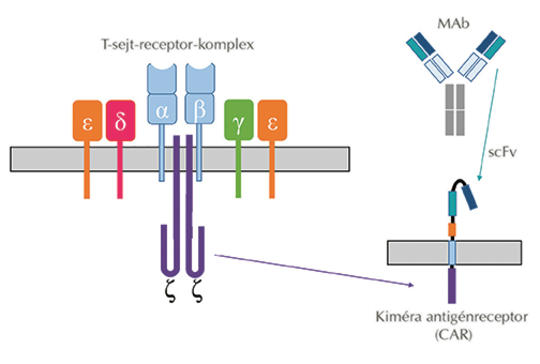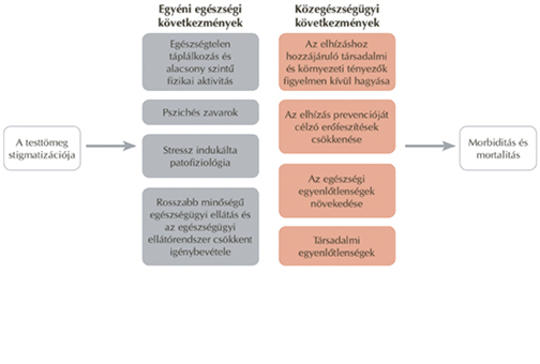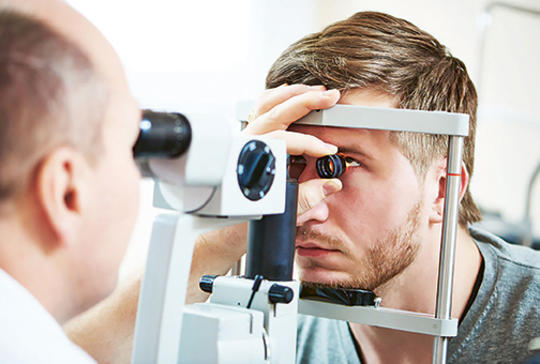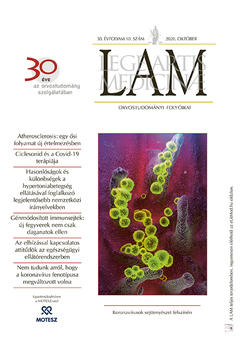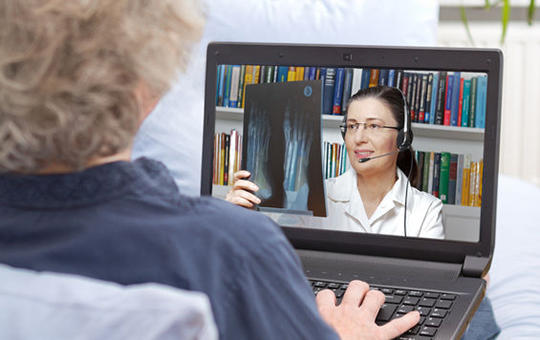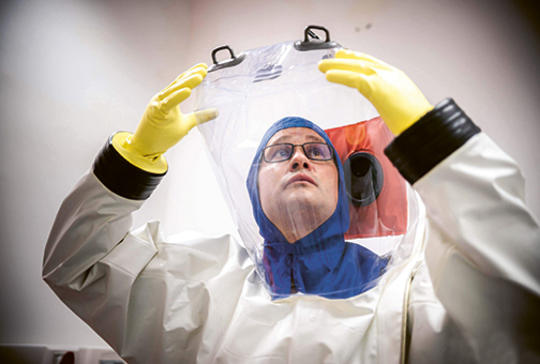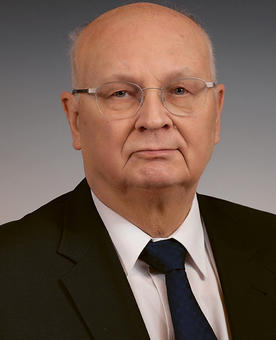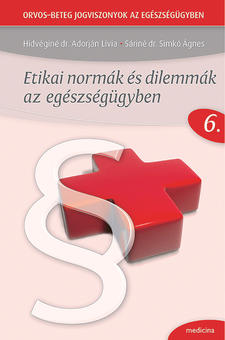The eLitMed.hu medical portal uses computer cookies for convenient operation. Detailed information can be found in the Cookie-policy.
Lege Artis Medicinae - 2020;30(10)
Content
[Similarities and differences of the most significant international guidelines for the treatment of hypertension]
[Guidelines of diagnosing and treating hypertension play pre-eminent role in maintaining health in our World. Based on reliable estimates we have to take in account more than 1.6 billion individuals suffering from hypertension by 2025. Adherence to the guidelines is a vital issue for all high blood pressure patients, however, also the economically developed countries have a disappointing share of well-controlled hypertension. Unfortunately, on the 5 continents of the world, the guidelines provide different or very different recommendations for measuring blood pressure, making diagnosis, estimating cardiovascular risk, and setting a target value, although an attempt has been made in the recent years for developing “consensus” in specific issues. This study presents the different opinions and resolutions by analysing the ACC/AHA, ESC/ESH, NICE, Canadian and Australian guidelines. WHO and ISH resolutions were also concerned. We describe the mutual adjustment in theoretical and practical terms of the guidelines and the consensus that have already been established.]
[Atherosclerosis: an ancient process in a new interpretation]
[The progress of atherosclerosis starts in childhood and lasts until the body dies. Most cardiovascular diseases and deaths can be traced back to atherosclerotic vascular changes. The process is thousands of years old, but its complex pathophysiology becomes recognized and realised only nowadays. Based on the evidence available today, atherosclerosis is such a chronic inflammatory disease of large- and medium-sized arteries, which is characterized by lipoproteins and immune cells transformed through oxidative and other changes and subendothelial accumulation of extracellular matrix. Innate and adaptive immunity provide a complex regulating system of atherogenesis, which while directing specifically the pro-atherogenic inflammatory and atheroprotective anti-inflammatory processes intensify plaque progression or even stabilize them respectively. With our growing knowledge about the pathology of atherogenesis, we can further improve the identification of cardiovascular risk conditions and apply more personalized therapeutic strategies.]
[Gene modified immune cells: New weapons not exclusively against cancer]
[The oncological breakthrough of the last decade was the application of CD19-specific CAR T cells in different hematologic diseases. Experience gained by clinical trials, coupled with investments of the private stakeholders and the pharmaceutical industry resulted not only in commercial release to the public of already developed CAR T cell products, but drew the attention of many researchers to the potentials of new type immune cells, and their non-oncological administration. This study aims to present briefly those preclinical applications, which approved successfully the administration of CAR T cells in autoimmune and infectious diseases.]
[Attitudes towards obesity in the health care system]
[Bias, prejudice and discrimination are part of the everyday life of people with obesity, even in the health care system. Obesity-related prejudices can lead to disrespectful, humiliating treatment of patients with excess weight and impair the quality of care for patients. There is a bidirectional relationship between stigmatization of obesity and obesity: discrimination against obesity is frequent, while stigmatization experiences lead to additional weight gain and result in avoidance of health care, and health deterioration and increased risk of mortality. The aim of the study is to raise awareness among professionals about obesity-related prejudices and discrimination, and to present strategies to reduce stigmatization of obesity in the health care system. All this will serve better care and may have public health significance in the long run.]
[Epidemiology of diabetes mellitus and diabetes-related eye complications in Hungary]
[Diabetes mellitus is a disease of civilization and a leading cause of blindness among people of working age in developed countries. It’s prevalence is estimated to be 9.9% in the adult population in Hungary, based on this, the estimated number of people with diabetes mellitus was 807 000 in 2015 in our country. Almost every fifth people with diabetes mellitus has some form of diabetic retinopathy in Hungary. Among diabetic persons 0.3% is blind and 0.3% has serious visual impairment due to not adequately treated diabetes mellitus. The total prevalence-based diabetes retinopathy-associated economic burden was 43.66 billion HUF in 2018 in our country. The two major cost drivers were anti-VEGF injections and vitrectomies; they covered almost the four-fifths of the total cost among people with diabetes mellitus. We have to emphasize the importance of prevention, healthy nutrition and frequent sport activity in the fight against diabetes mellitus and overweight. With at least annually performed eye examinations in people with diabetes mellitus and timely treatment of diabetic retinopathy, visual impairment and blindness due to complications of diabetes mellitus can be prevented. ]
[Teleconsultations in general practice during coronavirus epidemiological emergency]
[Modifications of operating the health care belong to the preventive measures of the COVID-19 epidemic. Their priority period was the time interval between March 21, and May 3, 2020. Teleconsultation played an emphasized and dedicated role among General Practitioners (GPs) and the range of health services available through telemedicine was published by the legislation. In the present study, we evaluated the experiences of GPs according to the mandatory family practice guidelines in this period using electronically administered questionnaires sent back by the GPs themselves. 83% of respondents considered that the number of patients consulted by teleconsultations increased significantly if contrasted to the pre-epidemic period. Of the tools used in teleconsultation, all respondents mentioned the telephone, 85.5% mentioned e-mail, while 40% also included social media applications. Prescribing drugs to known chronic patients and documentation were most feasible without face-to-face appointment. 96.5% of GPs responded that they are ready to use teleconsultation even after the epidemiological emergency. We conclude that the GPs met the requirements and responded quickly to the introduction of telemedicine in the epidemiological emergency, which reduced effectively personal contacts in the health care, and according to the feedbacks, “remote” cases got solved successfully. Additionally, telemedicine has also its place in the GP offices in terms of patient care and specialist consultations as well. The implementation of telemedicine is expected to provide opportunities for more rational patient care and management. The development of telemedicine protocols is necessary and actual to support patient safety and medical responsibility.]
1.
Clinical Neuroscience
[Headache registry in Szeged: Experiences regarding to migraine patients]2.
Clinical Neuroscience
[The new target population of stroke awareness campaign: Kindergarten students ]3.
Clinical Neuroscience
Is there any difference in mortality rates of atrial fibrillation detected before or after ischemic stroke?4.
Clinical Neuroscience
Factors influencing the level of stigma in Parkinson’s disease in western Turkey5.
Clinical Neuroscience
[The effects of demographic and clinical factors on the severity of poststroke aphasia]1.
2.
Clinical Oncology
[Pancreatic cancer: ESMO Clinical Practice Guideline for diagnosis, treatment and follow-up]3.
Clinical Oncology
[Pharmacovigilance landscape – Lessons from the past and opportunities for future]4.
5.





